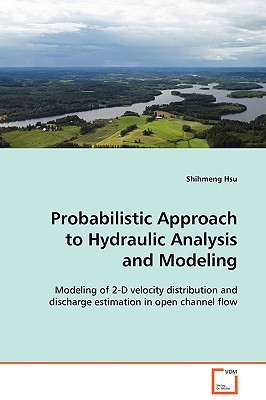
- We will send in 10–14 business days.
- Author: Shihmeng Hsu
- Publisher: VDM Verlag
- ISBN-10: 3639114388
- ISBN-13: 9783639114386
- Format: 15.2 x 22.9 x 0.8 cm, softcover
- Language: English
- SAVE -10% with code: EXTRA
Reviews
Description
A probability-based method is presented that can be used to simulate 2-D velocity distribution in rectangular open channels and to estimate the flow discharge. The method is based on Chiu's velocity distribution equation. A technique for estimating a parameter of 2-D velocity equation has been developed, by which the 2-D velocity distribution in rectangular open channels can be simulated by using one or several velocity samples, or even without using any velocity data. The present study also developed an efficient method of discharge estimation in rivers, which is applicable regardless of whether flow is steady or unsteady. It only requires a quick velocity sampling. The relation between the surface velocity and the vertical mean velocity has been studied. It can be used for developing a non-contact method of dis-charge measurement. Under the same framework of analysis, a new slope- area method has been developed to determine the flow discharge. It can reduce errors due to the uncertainties in Manning's n and the energy coefficient that exist in the widely-used slope- area method.
EXTRA 10 % discount with code: EXTRA
The promotion ends in 18d.02:10:54
The discount code is valid when purchasing from 10 €. Discounts do not stack.
- Author: Shihmeng Hsu
- Publisher: VDM Verlag
- ISBN-10: 3639114388
- ISBN-13: 9783639114386
- Format: 15.2 x 22.9 x 0.8 cm, softcover
- Language: English English
A probability-based method is presented that can be used to simulate 2-D velocity distribution in rectangular open channels and to estimate the flow discharge. The method is based on Chiu's velocity distribution equation. A technique for estimating a parameter of 2-D velocity equation has been developed, by which the 2-D velocity distribution in rectangular open channels can be simulated by using one or several velocity samples, or even without using any velocity data. The present study also developed an efficient method of discharge estimation in rivers, which is applicable regardless of whether flow is steady or unsteady. It only requires a quick velocity sampling. The relation between the surface velocity and the vertical mean velocity has been studied. It can be used for developing a non-contact method of dis-charge measurement. Under the same framework of analysis, a new slope- area method has been developed to determine the flow discharge. It can reduce errors due to the uncertainties in Manning's n and the energy coefficient that exist in the widely-used slope- area method.


Reviews